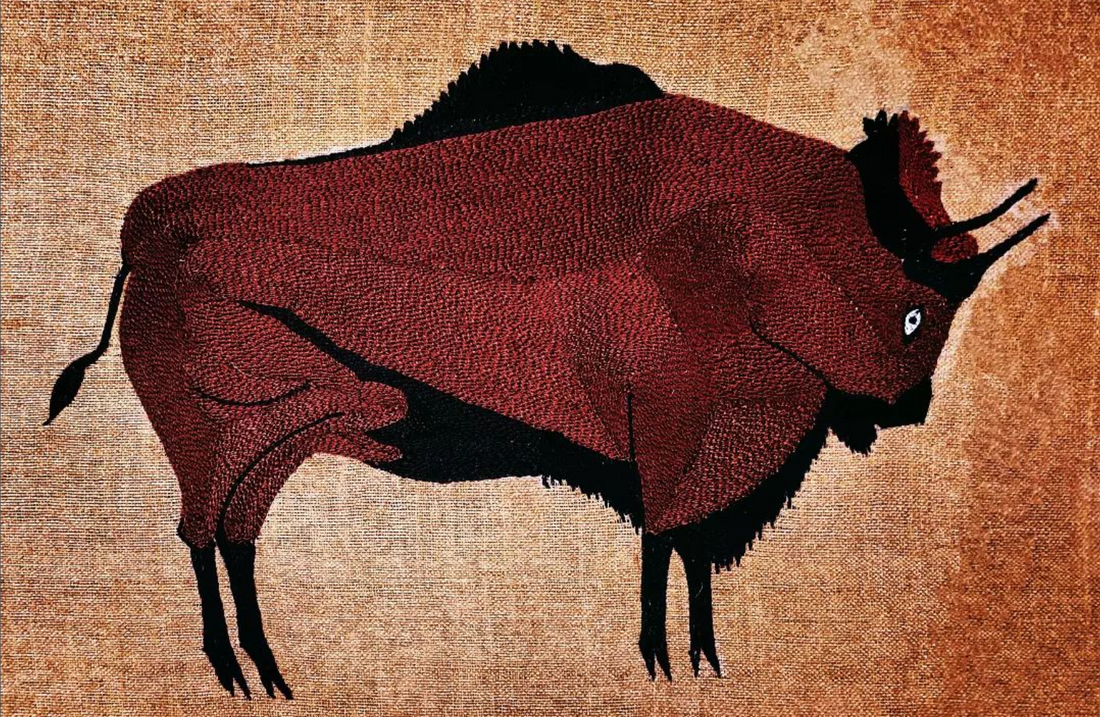
TEXTILE ART WITH AN ENVIRONMENT HEART
Image: The bull is part of the Antiquity art panel from the Altamira cave paintings. Image courtesy of Sunetra Lahiri
“Forests are the lungs of our planet and trees are at their heart. It takes decades for trees to grow to full maturity and just hours to cut them down destroying a world that lives in them. When we destroy forests we create graveyards for ourselves and future generations”, says textile designer and artist Sunetra Lahiri, Kolkata, West Bengal state, India. Image: Matsya-yan. Image courtesy of Sunetra Lahiri
Image: Matsya-yan. Image courtesy of Sunetra Lahiri
Anguished by the thoughtless cutting down of trees and disregard for water bodies, Sunetra designs textile art depicting lost enchanted forests; endangered elephants that once roamed forests; dried leaves denoting deforestation; common sparrows no longer commonly seen in cities; marine life swimming in fragile ecosystems; and cityscapes bereft of trees. The designs are brought to life by hand embroidery by artisans at her studio with the quiet presence of Tolstoy, her cat, observing the activities!
Once a composition is finalised it is transferred onto fabric. Then details of stitches to be worked and colours used are discussed with the artisans at the workshop. Typically running stitch (that features on traditional kantha embroidery/textiles of W. Bengal), aari embroidery (featuring chain stitch done by a hooked awl like a European tambour needle), and zardozi embroidery (done with No 12 fine needles to do satin stitch and use various techniques to affix beads, sequins, spangles to embellish motifs) are worked. Most of the works are stretched on a frame for embroidery. Sunetra continually tracks the work in progress, suggests changes if required, and it steadily comes alive teeming with details rendered by fine stitches. 
Image: The scarab beetle of ancient Egypt. Image courtesy of Sunetra Lahiri
“The works seek to draw attention to global warming, climate change and vanishing ecosystems. What took millions of years of evolution to build, mankind has decimated in 300 years of industrialisation. One can look at these works as art or hopefully as a message of a beautiful planet we live in, call home and wilfully abuse. Food, shelter and clothing- either directly or indirectly- come from trees. We need to think of alternatives to cutting down trees”.
Blog courtesy of Brinda Gill

3 comments
Creating awareness through needle art
Stunning images, timely message
Excellent concept and work is superlatively executed